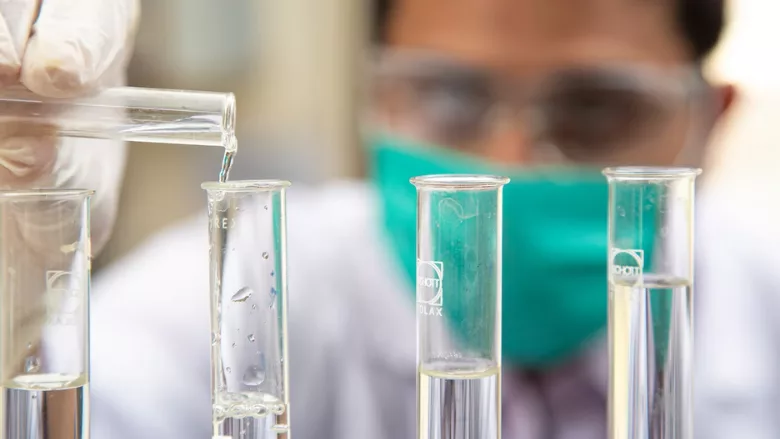Sustainable Organic Acid an Effective Disinfectant Against Foodborne Pathogens, Biofilm

Credit: Talha Hassan (talhahassan116) via Unsplash
A recent study has demonstrated the antimicrobial efficacy of a novel organic acid compound against common foodborne pathogens and biofilm. The compound, tetrapotassium iminodisuccinic acid salt (IDSK), was shown to be a promising disinfectant, and is also biodegradable and sustainable.
The study was conducted using IDSK samples prepared in the laboratory. The IDSK samples were tested against Salmonella enterica, Escherichia coli, Pseudomonas aeruginosa, Staphylococcus aureus, and Enterococcus faecalis. The scientists also cultivated biofilms with the bacteria strains, against which IDSK was tested.
After 20 hours of exposure to IDSK, all strains showed a total inhibition of planktonic cell growth up to 0.25 molal concentration (M), representing the lowest concentration of IDSK at which bacterial growth is completely inhibited. At a concentration of 0.125 M, P. aeruginosa, E. coli and S. enterica exhibited 51 percent, 55 percent, and 66 percent inhibition of bacteria growth, respectively. Moreover, 89 percent and 75 percent inhibitions were recorded against S. aureus and E. faecalis, respectively. A growth inhibition of less than 35 percent was detected when Gram-negative bacteria were treated with IDSK at a concentration of 0.063 M. Regarding Gram-positive strains, a growth inhibition greater than 59 percent was caused by treatment at a dose of 0.063 M.
The ability to degrade the biofilm of E. coli, S. aureus, S. enterica, E. faecalis, and P. aeruginosa was evaluated in response to treatment with IDSK. The mature biofilm matrix was exposed to the disinfectant for 20 hours, in a concentration range from 0.5 to 0.002 M. For S. enterica, S. aureus, and E. faecalis, 58, percent 45 percent, and 42 percent degradation were observed at a concentration of 0.25 M. Additionally, 33 percent and 28 percent of biofilm degradation were recorded against E. coli and P. aeruginosa, respectively, at the same concentration. The degradative proprieties of IDSK were significantly relevant up to 0.125 and 0.008 M against S. enterica and S. aureus, while it decreased in a dose-dependent manner against the other strains tested.
Overall, IDSK showed efficient antibacterial activity against Gram-positive and Gram-negative strains. Notably, IDSK at a concentration of 0.25 M completely suppresses the growth of P. aeruginosa, E. coli, S. enterica, S. aureus, and E. faecalis after 20 hours of exposure. Moreover, approximately 40 percent degradation occurred by exposing the mature biofilm to IDSK at a concentration of 0.25 M.
The study’s results suggest that IDSK represents a potential disinfectant for the food industry, as antimicrobial activity is achieved without the release of potentially toxic compounds. The efficient antibacterial activity, stability, and environmental sustainability of IDSK render the compound a promising solution for the food sector.
Looking for quick answers on food safety topics?
Try Ask FSM, our new smart AI search tool.
Ask FSM →








